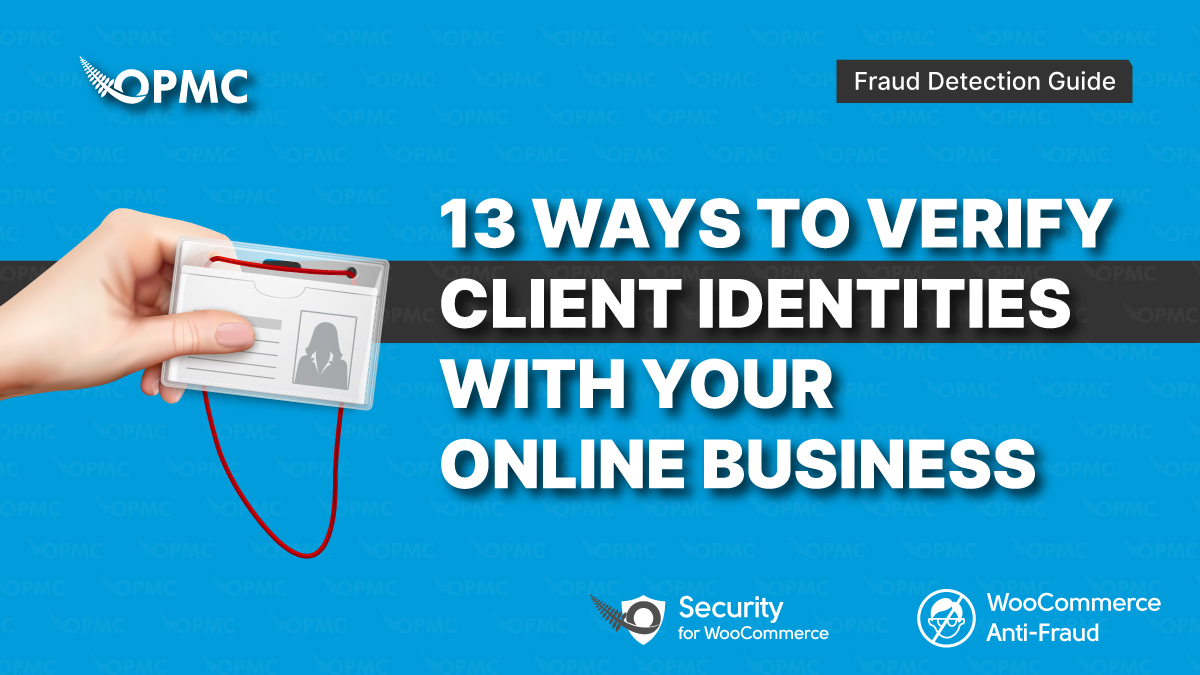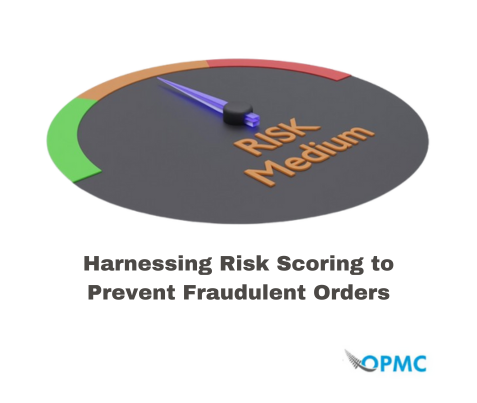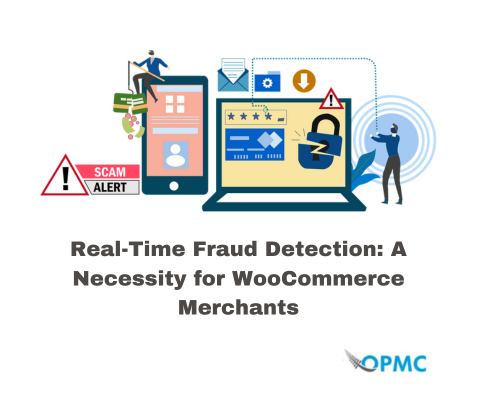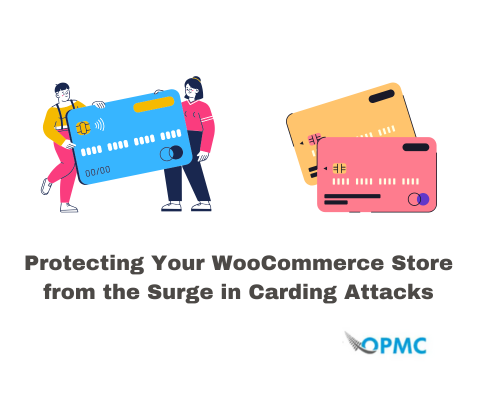There were around 16,000 reports of identity theft in Australia from 2022. A mere 6% of those resulted in losses totalling over $10 million. These reports grow exponentially when you consider all the other international locations most online businesses target. The fact is the online world is even more dangerous, with chargebacks, client identity theft, and friendly ecommerce fraud risking your everyday operations. Instead of raking in revenue, you have spent time paying payment processer fees or inventory losses. Incorporating effective strategies to verify client identities is crucial for the security and integrity of online businesses.
One of the best ways to avoid such challenges is by implementing a form of client identification verification. With modern tools and AI, these don’t have to harm your imagined customer experience in any way, but they should offer the protection you need for better operations.
Here are some of the more common online client identity verification systems being implemented today.
#1 – Phone SMS Ownership
Perhaps the most common identity verification system is SMS. This is done by sending out a text with a unique 5–8-digit code that the user then types in to confirm they are who they claim to be.
The trick here is to set up a secondary system just in case a fraudster verifies a purchase from a stolen iPhone, Samsung, or other mobile device. That is why you should always encourage customers to lock their phones with codes or biometrics.
#2 – Email Verification
Moving right along, our next method of verification is through an email address. This should be the email address that was used to set up the customer’s account.
Much like the SMS system, a longer code is sent to the email on file for that customer. They type in the code and are able to continue with the purchase.
#3 – ID Support
In some regions, you have to verify specific government-issued IDs to confirm who a person is online. This could be a driver’s license, passport, or military card.
In most cases, the verification happens through a third-party system that confirms the name, address, ID numbers, or rank that you can sign your online business up with. A lot of financial institutions use ID support as part of their anti-money laundering measures.
#4 – Selfie/Live Video
Asking customers to take a recent selfie or engage in live video streams is impacting the online business world.
There are even AI tools that can scan the facial recognition of potential customers seeking identity verification solutions in real time. Most often, the customer is asked to speak a “script,” so you know they aren’t a recording.
#5 – Documentation
Verifying specific geographic locations of customers is vital for certain products and online services. This could be a membership to a company only serving the Gold Coast or Japan.
In those cases, asking customers to supply documentation like utility bills, recent bank account verification, or adhering to other forms of physical due diligence can be carried out via a snapshot or scan.
#6 – PayPal/Bank Verification
Many ecommerce and online businesses working with crypto require some form of PayPal or bank account verification. This is so that when the transaction finally ends in fiat currency, it is sent to the proper institution.
A customer would then need to confirm a “micro deposit” of maybe $0.01 to ensure it is working correctly.
#7 – Voice Confirmation
Similar to live videos or selfies, voice confirmation works well as digital identity verification by ensuring the correct person is on the other end.
Most criminals do not want any recording of their voice, image, or other biometric data to end up on anyone’s database. So, this works as both a verification process and a deterrent.
#8 – Card Security Code
Almost all modern credit cards have what is known as a CSC. This is the “card security code,” usually located on the back of the physical card.
It is a 3- or 4-digit code a customer can enter into the payment process to verify they are holding the actual card and not some reproduction or purchased stolen identity.
#9 – Geolocation Proof
If a customer claims they are making a purchase on your online store from California, you should have a way to prove that is accurate.
Geolocation proof is a fantastic way to verify identities across ecommerce. Many tools will do this on your behalf, saving you a lot of time and money.
#10 – Social Media Verification
Social media is now part of our online identity. The posts we create tell a story about our authentic selves, and online businesses are using these to verify shoppers.
Maybe you request a customer post to their X account or make a comment on your recent Instagram photo so you can follow the breadcrumbs back to their social accounts.
#11 – Physical Address Records
While a little trickier to manage manually, verifying someone’s identity through a physical record approach is fantastic.
The only challenge is that people move all the time. There is a window of 1-2 months when someone is between addresses, which makes it really difficult to make an online purchase with a business using this verification method.
#12 – reCAPTCHA System
Google is your friend! Using the reCAPTCHA system enables you to verify the authenticity of the shopper. You can better differentiate clients from endless bots hoping to “game” your ecommerce system.
A lot of plugins offer this capability for your online business. Be sure you follow the instructions through Google to get a reCAPTCHA key and code. That is the most reliable.
#13 – Mobile Authenticators
The last identity verification solution we should mention is mobile authenticators. These are separate apps that confirm the ownership of the device with the account being logged into.
This is similar to an SMS message, but the third-party app does the hard work for you.
Wrapping Up
Knowing you are working with an actual human being making a purchase or signing up for your online business services is crucial to avoiding unnecessary fees or losses.
While running all the security programs in the world helps, having robust systems backed by AI and modern providers is much more critical.
That is why our team at OPMC has partnered with TrustSwiftly. They run all identities through multiple instances of verification systems, including all the ones covered in this article!
Together, this empowers our Anti-Fraud for WooCommerce plugin, so you have a single resource that is adjustable and easily blocks unwanted fraudulent transactions on your digital store. In addition to the TrustSwiftly features, this plugin provides:
- Real-time fraudulent order detection.
- Seamless integration with major payment gateways.
- Customisable fraud prevention settings.
- Advanced billing country verification.
- AI-driven high-risk order alerts.
- WordPress compatibility and one-click install.
- Comprehensive transaction review dashboard.
Download our WooCommerce Anti-Fraud plugin today and give your ecommerce site a strong shield against potentially fraudulent transactions.
FAQs
Can you verify someone’s identity online?
100% yes, you can! The more online transactions a person completes, the easier it is to verify they are who they say they are. That gives you greater peace of mind that you are dealing with a real human being and not a bot or fraudster.
What is the most common fraud in ecommerce?
The most common is friendly fraud or chargebacks, but it is closely followed by identity theft. Using a robust and multi-layered approach through our Anti-Fraud for WooCommerce plugin helps avoid all forms of online fraud.
What are the indicators of ecommerce fraud?
You should raise the red flag whenever you see unmatched shipping and billing details or have a large volume of orders from the same IP. You want to use the data in front of you to “judge” the transaction. Our plugin does this for you – saving you time and money.




